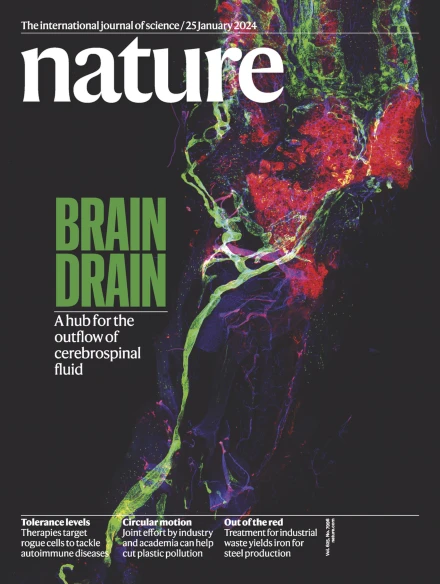Perisomatic ultrastructure efficiently classifies cells in mouse cortex
IF 50.5
1区 综合性期刊
Q1 MULTIDISCIPLINARY SCIENCES
引用次数: 0
Abstract
Mammalian neocortex contains a highly diverse set of cell types. These cell types have been mapped systematically using a variety of molecular, electrophysiological and morphological approaches1–4. Each modality offers new perspectives on the variation of biological processes underlying cell-type specialization. Cellular-scale electron microscopy provides dense ultrastructural examination and an unbiased perspective on the subcellular organization of brain cells, including their synaptic connectivity and nanometre-scale morphology. In data that contain tens of thousands of neurons, most of which have incomplete reconstructions, identifying cell types becomes a clear challenge for analysis5. Here, to address this challenge, we present a systematic survey of the somatic region of all cells in a cubic millimetre of cortex using quantitative features obtained from electron microscopy. This analysis demonstrates that the perisomatic region is sufficient to identify cell types, including types defined primarily on the basis of their connectivity patterns. We then describe how this classification facilitates cell-type-specific connectivity characterization and locating cells with rare connectivity patterns in the dataset. An analysis demonstrates that quantitative measurements of perisomatic ultrastructure features of neurons can be used to categorize them into cell types.


细胞周围超微结构能有效地对小鼠皮层细胞进行分类
哺乳动物的新皮层包含高度多样化的细胞类型。这些细胞类型已经使用各种分子、电生理和形态学方法进行了系统的定位1,2,3,4。每种模式都为细胞类型特化背后的生物过程变化提供了新的视角。细胞级电子显微镜提供了密集的超微结构检查和对脑细胞亚细胞组织的无偏视角,包括它们的突触连通性和纳米级形态。在包含成千上万个神经元的数据中,大多数神经元都有不完全的重建,因此识别细胞类型显然成为分析的一个挑战。在这里,为了解决这一挑战,我们利用电子显微镜获得的定量特征,对一立方毫米皮质中所有细胞的体细胞区域进行了系统的调查。该分析表明,细胞周围区域足以识别细胞类型,包括主要根据其连接模式定义的类型。然后,我们描述了这种分类如何促进细胞类型特定的连接表征和定位数据集中具有罕见连接模式的细胞。
本文章由计算机程序翻译,如有差异,请以英文原文为准。
求助全文
约1分钟内获得全文
求助全文
来源期刊

Nature
综合性期刊-综合性期刊
CiteScore
90.00
自引率
1.20%
发文量
3652
审稿时长
3 months
期刊介绍:
Nature is a prestigious international journal that publishes peer-reviewed research in various scientific and technological fields. The selection of articles is based on criteria such as originality, importance, interdisciplinary relevance, timeliness, accessibility, elegance, and surprising conclusions. In addition to showcasing significant scientific advances, Nature delivers rapid, authoritative, insightful news, and interpretation of current and upcoming trends impacting science, scientists, and the broader public. The journal serves a dual purpose: firstly, to promptly share noteworthy scientific advances and foster discussions among scientists, and secondly, to ensure the swift dissemination of scientific results globally, emphasizing their significance for knowledge, culture, and daily life.
 求助内容:
求助内容: 应助结果提醒方式:
应助结果提醒方式:


